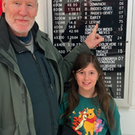COVID-19 is our canary in the coal mine
To the Editor:
Looking back on the time spent while life was on pause, I came to realize three important takeaways from the COVID-19 experience that should be reflected upon as it touches all of our lives.
Life as we know it came to a standstill during the lockdown phase of our COVID response. We were for the most part unable to move about freely, and we were unable to purchase the goods and services we are accustomed to having access to.
For many of us, our ability to work to provide for ourselves and our families was no longer an option as our places of employment were closed. Understandably, here and across the nation, pockets of rebellion began bubbling up as people felt that their freedoms were being limited and they demanded an end to the lockdown.
But for many Amercians, these limitations have been in place long before COVID-19 came onto the scene. In our country, one’s race, class, creed, religion, gender, or sexual preference has a direct impact on how much freedom you are allotted each day. Those who chafed under the bit of the lockdown maybe don’t have a full understanding of how much more freedom they really have.
In America, we love our slogans, from “Got Milk” to “Have It Your Way,” so it’s no surprise that “Quarantine The Sick” caught on so quickly. The fact of the matter is this makes a great poster for a rally but not very helpful for COVID-19.
When you get sick with something like the flu, there are visible symptoms that you are sick like coughing, runny nose, or a fever. So, it’s clear that a person is sick and then they can be isolated so others don’t get sick.
But COVID-19 is not the flu and we have the phenomenon of the “asymptomatic carrier,” which is someone who shows no outward signs of being sick but is contagious and capable. Since these people don’t look sick, they are free to move about their communities, infecting people wherever they go.
You can’t isolate what you can’t see. The only other way to quarantine those who are asymptomatic is to have a system of testing in place to slow the spread of infections, but our country does not have the capacity to test at this level nor does the current administration seem interested in supporting the development of a testing system to tackle this issue.
Generally speaking, before COVID-19 we knew that, if people we came into contact with at work or a member of our family had a cold or the flu, there was a good chance we could get it. But now, the game has changed because COVID-19 spreads quicker than a funny meme or the fear of running out of toilet paper during lockdown.
Now, we not only have to be wary of people at work, at the grocery store, or who we pass on the street, but we have to think about the person who used the door handle five to 14 days ago that we will use today.
It’s been a long time since a person who is so far removed from your life has the potential to reach right in and not only infect but quite possibly kill you, members of your family, or your friends. Somehow, that rugged swagger of Marion Morrison [stage name: John Wayne] doesn’t seem to be too helpful these days.
A quick snapshot of the three takeaways for y’all. Freedom is applied differently to every single American; facts are not negotiable and perception is not reality; and when we all do better, we all do better.
I think these three takeaways are important for two reasons. The first being that COVID-19 is not a one-and-done situation. Just look at the situation in those states that didn’t heed or believe what was being said about COVID-19.
Now, if COVID-19 does return, we are in a position to be able to limit its impact and prevalence across our communities and state, providing we keep in mind what we learned during the lockdown.
The second reason is that, in reality, COVID-19 is not a very dangerous virus beyond the fact that it spreads super fast and does lead to death in people with compromised health systems and/or underlying health issues.
COVID-19 is our canary in the coal mine and is calling us to pay attention. We should be thinking about the next pandemic that comes out that has a mortality of 11 to 15 percent or 25 to 30 percent, far above COVID-19’s approximate 1 percent?
Will we be ready? For our childrens’ sake, I hope so.
Aaron Harrell
Guilderland
